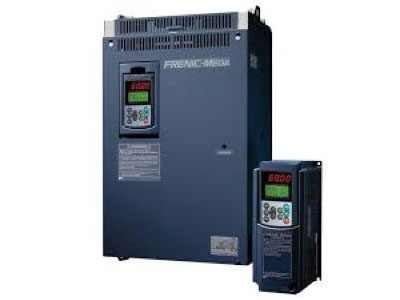Key Takeaway
The main function of a Variable Frequency Drive (VFD) is to control motor speed and torque. This is done by varying the supply voltage and frequency to the motor. VFDs are used in many applications, from small appliances to large industrial machines. They ensure that motors operate efficiently by adjusting the speed to match the specific needs of the task. This helps in saving energy, reducing wear and tear on the motor, and improving overall performance. By using VFDs, industries can optimize processes, enhance equipment lifespan, and achieve better control over their operations.
Speed Control of Electric Motors
The primary function of a Variable Frequency Drive (VFD) is to control the speed of electric motors. Imagine being able to fine-tune the speed of a machine to match the exact requirements of a task. VFDs offer this precise control, which is essential in many industrial applications. By adjusting the motor speed, VFDs help enhance productivity and efficiency. For instance, in conveyor systems, you can slow down or speed up the belt to match the production line’s pace, ensuring smooth operation. This control not only optimizes performance but also extends the life of the equipment by reducing mechanical stress and wear.

Energy Savings Through VFDs
Energy savings are a significant advantage of Variable Frequency Drives (VFDs) in industrial applications. Unlike traditional motor systems that operate at fixed speeds regardless of the actual demand, VFDs dynamically adjust the motor’s speed to match specific load requirements. This adaptive control not only optimizes motor performance but also results in substantial energy conservation.
For instance, in HVAC (Heating, Ventilation, and Air Conditioning) systems, where fans often run continuously at full speed, VFDs enable precise speed modulation. When the system doesn’t require maximum airflow, the VFD reduces the motor’s speed accordingly. This targeted adjustment minimizes energy consumption by aligning operational output with actual needs, thereby cutting down on wasted energy.
The benefits extend beyond cost savings. By reducing energy usage, VFDs contribute to environmental sustainability by lowering carbon emissions and overall energy footprints. This aligns with global efforts towards greener practices and sustainable development goals.
Engineers new to the field can leverage these capabilities to enhance system efficiency and operational cost-effectiveness in various industrial settings. Understanding the role of VFDs in energy conservation empowers engineers to make informed decisions that not only optimize performance but also promote environmental responsibility.
You May Like to Read
Improved Process Control
Improved process control stands as a pivotal advantage of Variable Frequency Drives (VFDs) in industrial operations. These devices play a crucial role in maintaining precise management over speed and torque, which are essential for ensuring high-quality production and operational efficiency across various industrial processes. By facilitating smooth acceleration and deceleration of motors, VFDs significantly mitigate the risks associated with abrupt starts and stops that could otherwise disrupt manufacturing continuity.
Consider a bottling plant scenario where VFDs regulate the speed of filling machines to ensure each bottle is filled accurately and consistently. This meticulous control not only enhances product quality by minimizing variations but also reduces defects, thereby boosting overall productivity and operational reliability.
Engineers, especially those new to the industry, benefit from understanding how VFDs contribute to streamlined processes and improved product outcomes. This knowledge empowers them to leverage VFD capabilities effectively in diverse industrial applications, contributing to enhanced operational performance and sustainable manufacturing practices.
Protection of Motor and Equipment
Variable Frequency Drives (VFDs) play a critical role in safeguarding motors and equipment in industrial settings. They effectively mitigate common issues such as overloading, overheating, and sudden mechanical stress, which can lead to costly damages. By offering soft start and stop functions, VFDs significantly reduce both electrical and mechanical stress on the motor, thereby extending its operational lifespan.
For instance, in pump systems, VFDs initiate gradual speed increases, preventing the water hammer effect that could otherwise damage pipes and fittings due to abrupt changes in flow. Moreover, VFDs continuously monitor the motor’s performance in real-time. They provide vital data and instant alerts regarding potential issues, enabling proactive maintenance to prevent failures and minimize downtime.
Engineers benefit from this proactive approach as it ensures equipment operates reliably and efficiently over time. By integrating VFDs into industrial processes, they not only enhance operational safety but also optimize energy consumption and overall system performance.
Flexibility in Industrial Applications
Flexibility is a standout feature of Variable Frequency Drives (VFDs) in industrial settings, offering adaptability across a wide spectrum of industries. From manufacturing plants to water treatment facilities, VFDs play a pivotal role in controlling diverse types of motors and machinery with precision. Their ability to adjust motor speed enables versatile applications such as regulating conveyor belt speeds, fine-tuning pump flow rates, or optimizing fan operation.
This adaptability not only enhances operational efficiency but also supports dynamic control systems required in modern industrial environments. Engineers find VFDs invaluable for their capability to tailor motor performance to specific operational needs, whether in maintaining consistent production flow or responding to fluctuating demand.
In industries where flexibility is crucial, such as food processing, automotive manufacturing, or HVAC systems, VFDs contribute significantly to improving productivity and energy efficiency. Their integration into automation systems ensures seamless operation and reliability, making them a preferred choice for engineers aiming to optimize industrial processes.
By leveraging the versatility of VFDs, industries can achieve greater control over their operations, reduce energy consumption, and enhance overall system performance, underscoring their importance as a cornerstone of modern industrial automation.
Conclusion
In summary, VFDs are essential in modern industrial applications due to their ability to control motor speed, save energy, improve process control, protect equipment, and offer flexibility. They not only optimize performance and efficiency but also contribute to significant cost savings and sustainability efforts. By understanding and leveraging the core functions of VFDs, industries can enhance their operational capabilities and maintain a competitive edge in the market. The practical benefits of VFDs make them a crucial component in the toolkit of any industrial engineer.
